Exploring Jinci Temple Complex: A Hidden Gem of Ancient Chinese Architecture
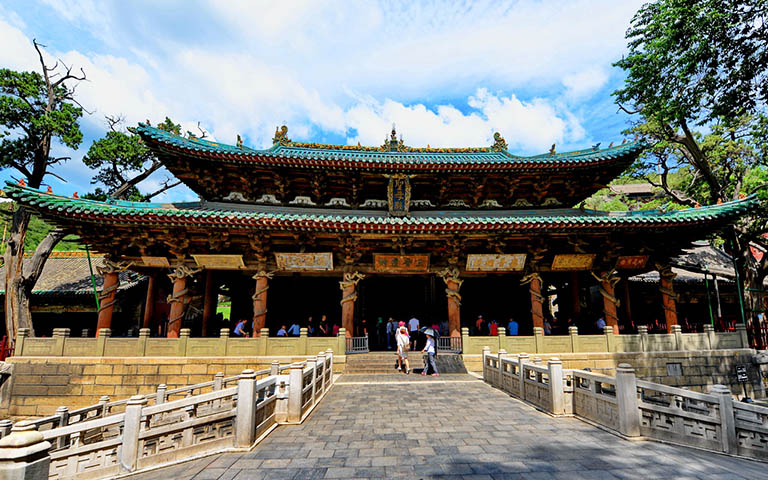
An Essential Guide to Visiting Jinci Temple Complex
In This Guide
- An Essential Guide to Visiting Jinci Temple Complex
- The Rich History and Legends of Jinci Temple Complex
- Main Highlights: What You Absolutely Can’t Miss
- Planning Your Visit: A Practical Guide
- Tickets: Prices, Booking, and Tips
- How to Get There: A Complete Transportation Guide
- Local Cuisine and Accommodation Nearby
- Frequently Asked Questions
- Final Thoughts on Your Trip
Discover the Timeless Beauty of Jinci Temple Complex
Nestled in the serene landscapes of Lingshi County, the Jinci Temple Complex (晋祠古建筑群) is an enchanting testament to Chinese history and spirituality. Just a short drive from the bustling city of Taiyuan, this ancient site invites visitors to immerse themselves in a rich tapestry of culture dating back over 1,500 years. With its stunning architecture, tranquil gardens, and profound historical significance, Jinci Temple is not just a destination; it is an experience that resonates deeply with those who seek to understand the essence of Chinese civilization.
As you wander through the expansive grounds, you’ll encounter exquisite pavilions adorned with intricate carvings, serene lagoons reflecting the sky, and some of the oldest trees in China, including a revered cypress estimated to be over 3,000 years old. Each structure tells a story, echoing the philosophical ideals of Yin and Yang, which were meticulously integrated into the design of the complex.

Jinci Temple Complex.
Jinci Temple is not merely a relic of the past but a vibrant cultural hub where the influences of Daoism, Confucianism, and Buddhism intertwine seamlessly. Whether you are an avid historian, a spiritual seeker, or simply a traveler yearning for beauty and peace, this sanctuary offers a tranquil escape and a glimpse into the profound beliefs and artistic expressions of ancient China.
Prepare to be captivated by the sights, sounds, and stories that linger in the air at Jinci Temple. This guide will equip you with essential information to ensure your visit is both enlightening and enjoyable. From practical tips to highlights of the complex, let’s embark on a journey through one of China’s hidden gems.
The Rich History and Legends of Jinci Temple Complex
Nestled in the picturesque Lingshi County of Shanxi Province, the Jinci Temple Complex is a treasure trove of Chinese history and culture that beckons travelers with its rich heritage and enchanting legends. This ancient site, dating back over a thousand years, is not merely a collection of temples but a vivid narrative woven into the fabric of Chinese civilization.
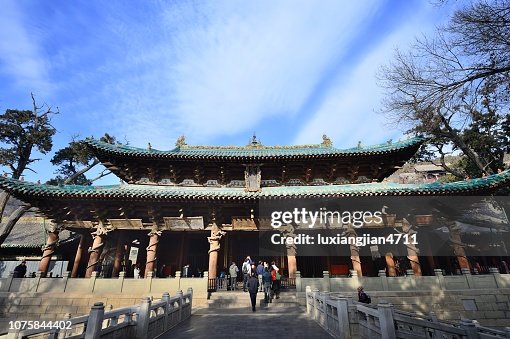
Jinci Temple Complex.
Historical Significance
The Jinci Temple Complex was originally established during the Western Zhou Dynasty (1046–771 BC) and has been a place of worship for centuries, dedicated primarily to the Goddess of the Southern Hills, known as the “Saint Mother.” This deity is revered as the protector of the local populace, and the complex itself has evolved over time, with structures built from the Song Dynasty (960–1279 AD) through to the Ming (1368–1644 AD) and Qing Dynasties (1644–1912 AD).
One of the most notable architectural masterpieces within the complex is the Saint Mother Hall, which was constructed in 984 AD. This hall stands as a testament to the advanced craftsmanship of the time, featuring intricate carvings and beautifully preserved murals that depict scenes from Chinese mythology and daily life. The cypress tree, estimated to be over 3,000 years old, is another highlight, believed to be a guardian of the site and a symbol of resilience and longevity.
Architectural Wonders
The Jinci Temple Complex encompasses a vast area, showcasing a harmonious blend of architectural styles influenced by Daoism, Buddhism, and Confucianism. Visitors will find a series of pavilions, shrines, and ancient opera stages, all meticulously designed according to the principles of Yin and Yang. The complex is adorned with exquisite stone and brick carvings, featuring mythical creatures like dragons coiling around wooden pillars, which reflect the artistic prowess of the era.
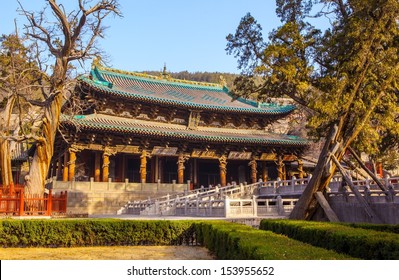
Jinci Temple Complex.
Notable Structures:
– The Saint Mother Hall: An architectural marvel from the Song Dynasty, celebrated for its stunning murals and ancient artifacts.
– The Iron Statue of the Saint Mother: Dating back to the Song Dynasty, this statue is regarded as one of the earliest examples of iron casting in China.
– The Hall of Great Achievement: A shrine dedicated to the legendary hero and patriarch, Yang Jian, known for his wisdom and bravery.
Legends and Folklore
The Jinci Temple Complex is steeped in legends that have captivated the hearts of many. One prominent tale revolves around the Saint Mother herself, who is said to have emerged from the Southern Hills to aid a local ruler during a time of crisis. According to legend, she descended from the heavens, bringing with her the wisdom and strength needed to unite the people and restore peace. Her enduring presence in the temple complex symbolizes compassion and protection.
Another fascinating story is that of the Three Sages of Jinci, who are believed to have visited the complex during the Tang Dynasty. These sages, renowned for their teachings, are said to have left behind profound wisdom etched in the temple’s walls, guiding generations on the path of learning and enlightenment.
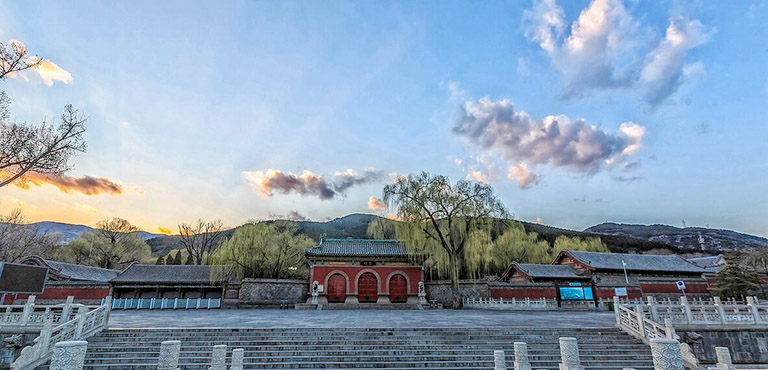
Jinci Temple Complex.
A Place for Reflection
Today, the Jinci Temple Complex serves not only as a historical site but also as a tranquil retreat for those seeking peace and introspection. Its expansive gardens, ancient trees, and serene water features create an atmosphere of harmony, inviting visitors to engage with the landscape while reflecting on the rich tapestry of stories that have unfolded here over millennia.
For international travelers looking to delve into China’s deep historical roots, the Jinci Temple Complex presents an unmissable opportunity to explore a site where history and legend intertwine, offering a glimpse into the spiritual and cultural heritage that continues to shape the region today. Whether you are wandering through its ancient halls or contemplating the wisdom of its legends, Jinci Temple promises an enriching experience that resonates with the heart of Chinese civilization.
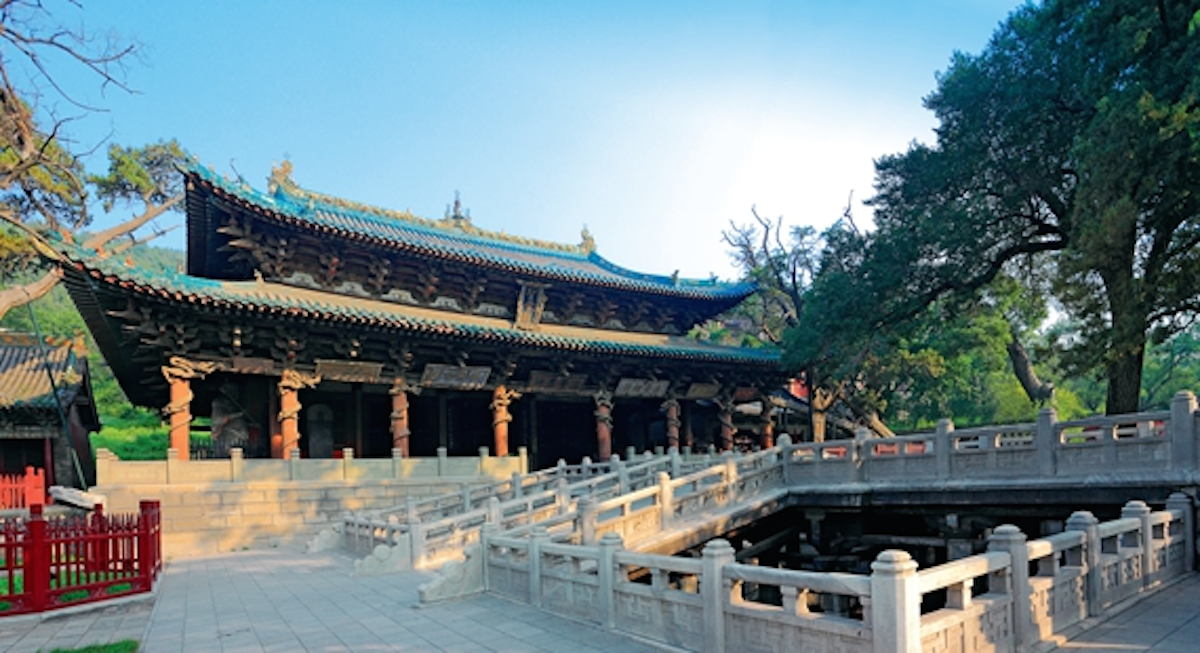
Jinci Temple Complex.
Main Highlights: What You Absolutely Can’t Miss
Discover the Splendor of Jinci Temple Complex
Nestled in the tranquil hills of Lingshi County, the Jinci Temple Complex is a magnificent testament to ancient Chinese architecture and cultural heritage. With its rich history dating back over 3,000 years, this site offers visitors a captivating glimpse into the past. Here are the main highlights you absolutely can’t miss during your visit:
1. Saint Mother Hall (圣母殿)
Arguably the centerpiece of the Jinci Temple, the Saint Mother Hall was constructed in 984 AD and dedicated to the mother of the first king of the Jin Dynasty. Its intricate wooden carvings and stunning architecture showcase the artistry of ancient China. Be sure to admire the delicate details of the wooden dragons coiling around the pillars, a symbol of strength and auspiciousness.
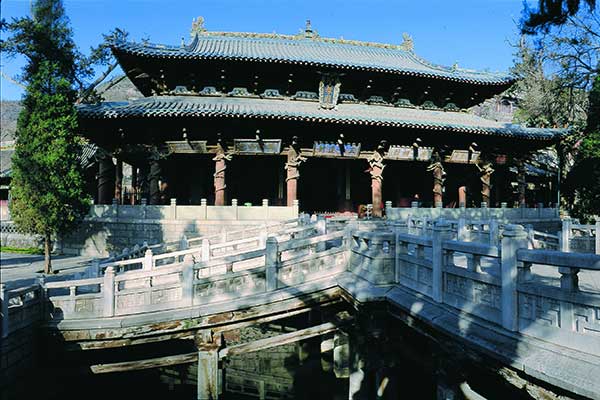
Jinci Temple Complex.
2. The Ancient Cypress Tree
Standing proudly for over 3,000 years, the Cypress Tree is a living relic of history. This majestic tree not only serves as a natural monument but also symbolizes resilience and longevity in Chinese culture. Take a moment to appreciate its grandeur and the serene atmosphere surrounding it.
3. Buddhist Garden (佛教园)
The Buddhist Garden is an oasis of peace and tranquility, featuring beautifully landscaped areas that invite reflection and relaxation. Stroll through its expansive grounds, adorned with ancient trees and vibrant flora, and immerse yourself in the spiritual ambiance. This is the perfect spot for photography enthusiasts looking to capture the serene beauty of the complex.
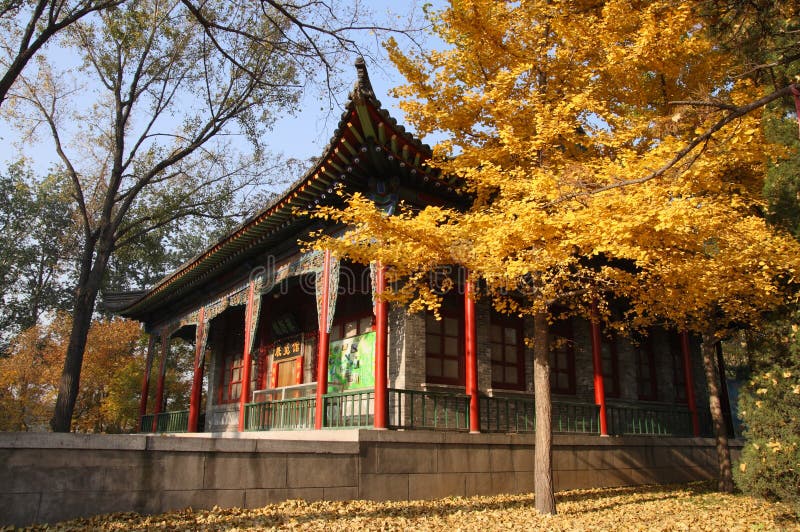
Jinci Temple Complex.
4. Exquisite Carvings and Statues
Wander through the temple grounds and discover the exquisite stone and brick carvings that decorate the various halls and pavilions. Notable among them is the iron statue from the Song Dynasty, showcasing the craftsmanship and artistic expression of that era. Each carving tells a story, reflecting the deep-seated beliefs and traditions of Chinese culture.
5. Architectural Diversity
The Jinci Temple Complex is a rare blend of Confucian, Daoist, and Buddhist influences, making it a unique architectural marvel. Explore the various structures, from pavilions to shrines, and appreciate how these different philosophies coalesce in a harmonious design. The intricate details and layout reflect the ancient Chinese understanding of Yin and Yang, which is integral to the site’s aesthetics.
6. Pavilions and Lagoons
As you wander through the complex, don’t miss the beautiful pavilions set against the backdrop of serene lagoons. These picturesque spots offer a perfect escape to enjoy the natural beauty that surrounds the temple. The combination of water and architecture creates a serene and reflective atmosphere that is truly enchanting.
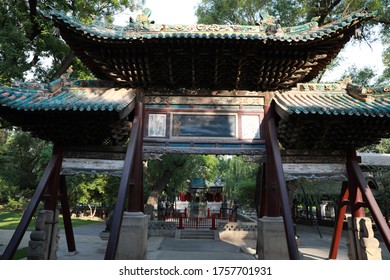
Jinci Temple Complex.
7. Cultural Significance
Beyond its aesthetic beauty, Jinci Temple holds profound cultural and historical significance. It is a site of worship and reverence for many, embodying the essence of Chinese spirituality and philosophy. Understanding its background enhances the experience, allowing visitors to appreciate the deeper meanings behind the structures and sculptures.
Practical Tips for Your Visit
- Opening Hours: The temple is open daily from 9:00 AM to 5:00 PM. Arriving early can help you avoid the crowds.
- Getting There: Located about 24 km from Taiyuan, the temple is accessible by public bus or taxi. Consider hiring a car for convenience.
- What to Bring: Comfortable walking shoes are recommended, as the grounds are extensive. Don’t forget your camera to capture the stunning architecture and natural beauty.
- Guides: While English signs are available, hiring a guide can enrich your understanding of the temple’s history and significance.
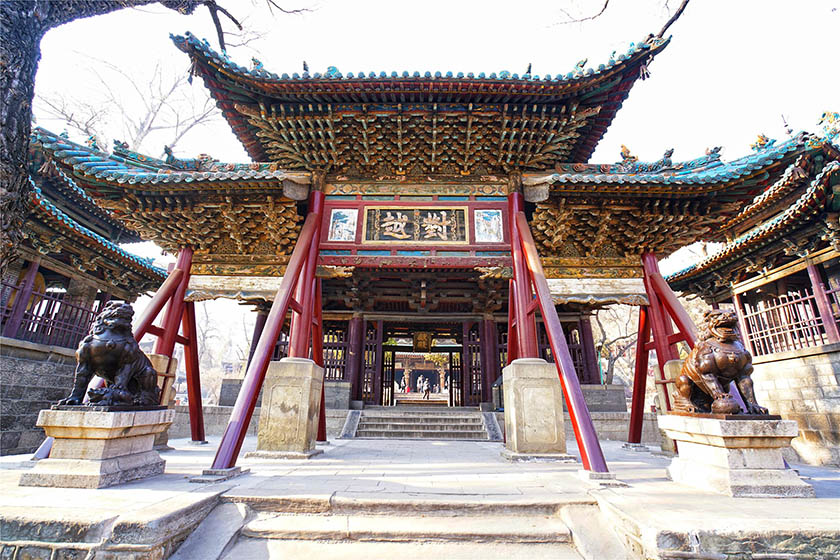
Jinci Temple Complex.
Visiting the Jinci Temple Complex is not just a journey through stunning landscapes and architecture; it is an immersion into the rich tapestry of Chinese history and culture. Don’t miss the chance to experience this remarkable site that beautifully intertwines nature and spirituality.
Planning Your Visit: A Practical Guide
Essential Information for Your Visit to Jinci Temple Complex
Nestled in the serene Lingshi County, approximately 25 kilometers from Taiyuan in Shanxi Province, the Jinci Temple Complex (晋祠古建筑群) offers an unparalleled glimpse into China’s rich history and architectural marvels. This ancient site, renowned for its harmonious blend of Confucian, Daoist, and Buddhist influences, is a must-visit for anyone interested in Chinese culture.
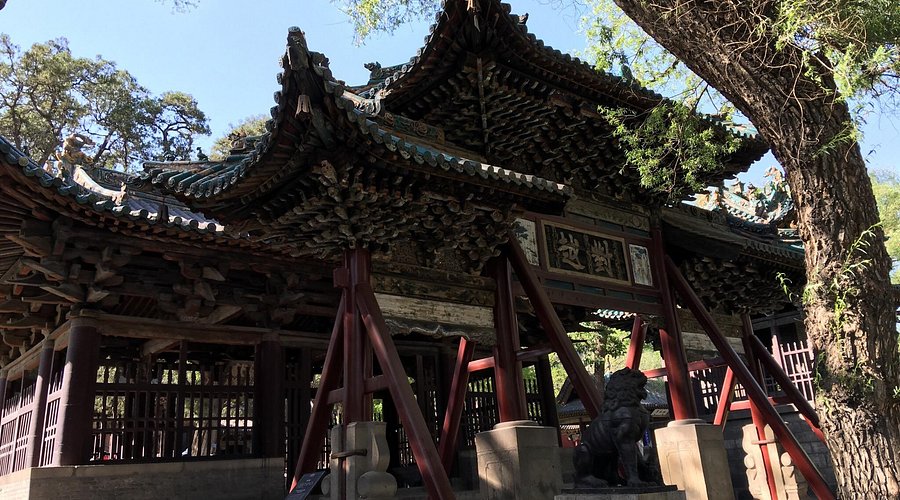
Jinci Temple Complex.
Location and Access
- Address: Mahe Village, Mahe Country, Lingshi County, Shanxi, China
- Getting There:
- By Car: A 40-minute drive from Taiyuan will take you directly to the temple complex.
- Public Transport: Buses frequently run from Taiyuan to Lingshi County, making this a budget-friendly option.
- Private Tours: Consider hiring a car or joining a guided tour for a more personalized experience.
Opening Hours
- Daily: 9:00 AM – 5:00 PM
- Tip: Arrive early to enjoy a quieter experience, especially during weekends and holidays when crowds can swell.
Admission Fees
- Ticket Prices: Generally around 50 RMB, but check for any seasonal promotions or discounts for students and seniors.
- Guided Tours: While guides are available at the entrance, English signage is provided throughout the complex, making self-guiding an option for those who prefer to explore at their own pace.
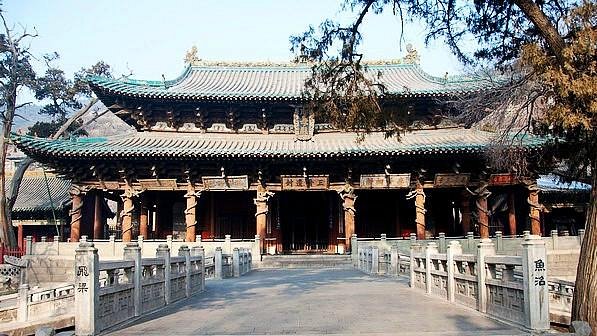
Jinci Temple Complex.
What to See
- Architectural Wonders:
- Marvel at the ancient structures dating back to the Song Dynasty, including the famed Saint Mother Hall, built in 984 AD.
-
Admire exquisite stone and brick carvings, particularly the intricate wooden dragons coiling around the pillars.
-
Natural Beauty:
- Stroll through expansive gardens featuring ancient cypress trees, some over 3,000 years old, providing a tranquil backdrop for reflection and photography.
-
Explore lagoons and manicured landscapes that change beautifully with the seasons.
-
Cultural Insights:
-
Discover the rich history behind the temple complex, which reflects ancient Chinese philosophical ideals of Yin and Yang.
-
Nearby Attractions:
- Enhance your visit by exploring nearby sites like Wang’s Family Compound and Houtu Temple, both of which showcase traditional Chinese architecture and history.
Practical Tips
- Dress Comfortably: Wear comfortable shoes as you will be walking around the vast complex. The terrain can be uneven in places.
- Photography: Bring your camera, as the stunning architecture and serene gardens offer countless opportunities for memorable shots.
- Food and Amenities: While there are food stalls outside the temple grounds, consider bringing water and snacks for your exploration. The restrooms in the area are reported to be clean and well-maintained.
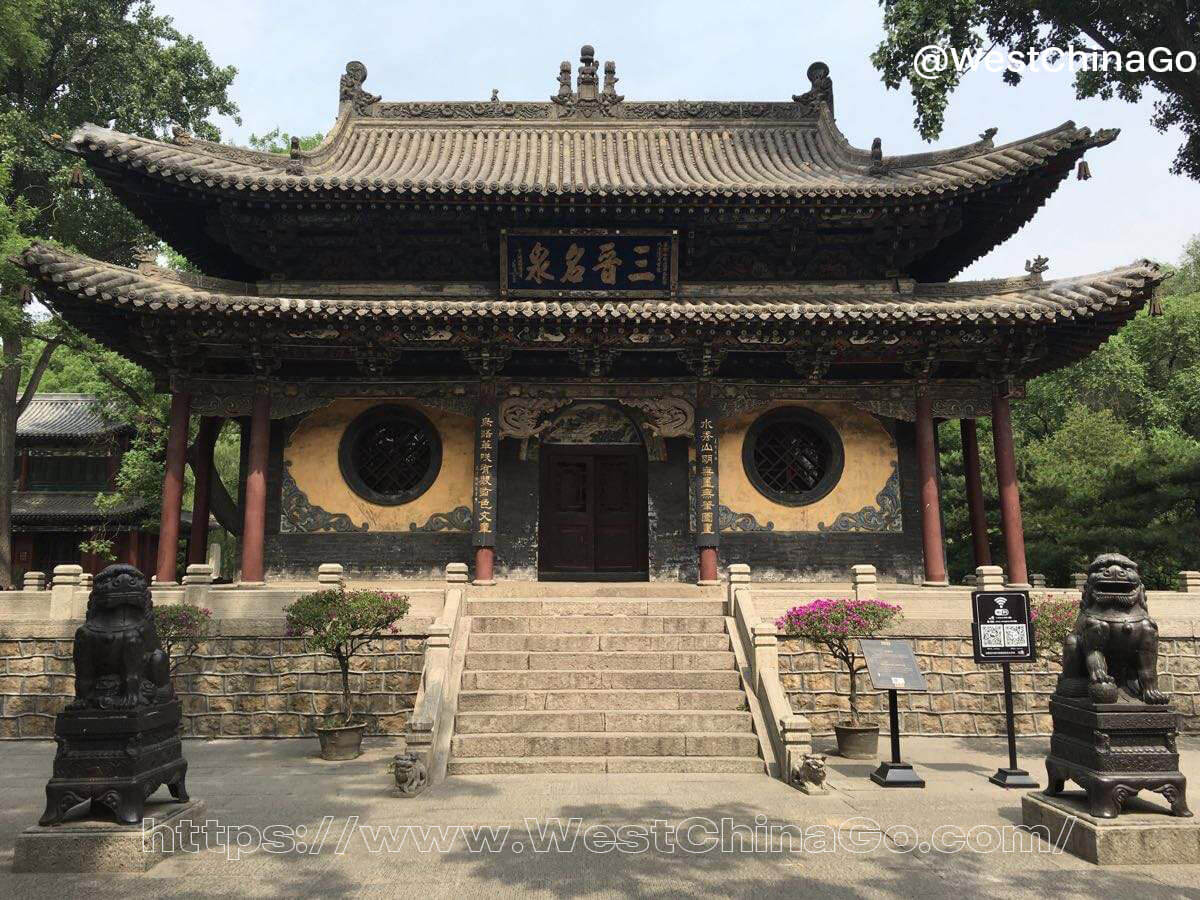
Jinci Temple Complex.
Conclusion
Visiting the Jinci Temple Complex is not just a trip; it’s an immersive experience that transports you through the annals of Chinese history and culture. With its breathtaking scenery, rich heritage, and serene atmosphere, it’s a perfect destination for history enthusiasts, photographers, and anyone looking to connect with the spiritual roots of China. Make sure to set aside a few hours to fully appreciate this cultural gem!
Tickets: Prices, Booking, and Tips
Visiting Jinci Temple Complex: Ticket Information and Tips
Embarking on a journey to the Jinci Temple Complex, a stunning historical site in Lingshi County, is a step into the rich tapestry of Chinese culture and architecture. To ensure your visit is smooth and enjoyable, here’s everything you need to know about ticket prices, booking, and essential tips.
Ticket Prices
- Adult Admission: Approximately CNY 50 (around USD 8).
- Children: Generally, children under the age of 12 can enter for free, though it’s advisable to check specific age requirements.
- Discounts: Senior citizens and students may be eligible for discounted tickets, so be sure to bring your identification for verification.
Booking Information
- Online Reservations: Tickets can typically be booked online through various travel platforms or directly on the official Jinci Temple website. This is recommended during peak tourist seasons to avoid long queues.
- On-Site Purchase: Tickets are also available for purchase at the entrance. However, arriving early is advisable, especially on weekends and holidays when crowds are larger.
Opening Hours
- Daily Hours: Jinci Temple is open from 9:00 AM to 5:00 PM. The temple complex is closed during major public holidays, so check ahead if you plan to visit during these times.
Tips for a Great Visit
- Plan Your Time: Allocate at least 2-3 hours to explore the vast grounds, which include ancient pavilions, gardens, and historical artifacts. The serene environment is perfect for leisurely strolls and photography.
- Guided Tours: Consider hiring a local guide to enhance your understanding of the temple’s history and significance. Knowledgeable guides can provide insights that enrich your experience.
- Visit Early: To fully appreciate the beauty of the gardens and avoid crowds, aim to arrive right at opening time. This also allows for better photo opportunities without the hustle and bustle of other visitors.
- Bring Snacks and Water: While there are food stalls outside the temple, having your own snacks and water can make your visit more comfortable, especially if you plan to spend several hours exploring.
- Dress Comfortably: Wear comfortable shoes and clothing, as you will be walking through large garden areas and ancient pathways. Consider bringing a hat and sunscreen for sun protection.
By following these guidelines, your visit to the Jinci Temple Complex will be not only enjoyable but also deeply enriching, allowing you to immerse yourself in the beauty and history of one of China’s treasured sites. Happy travels!
How to Get There: A Complete Transportation Guide
Getting to Jinci Temple Complex: Your Ultimate Transportation Guide
Visiting the Jinci Temple Complex (晋祠古建筑群) is a journey into the depths of Chinese history and culture, and getting there is part of the adventure. Nestled in Lingshi County, approximately 25 kilometers southwest of Taiyuan, the capital of Shanxi Province, Jinci Temple offers a peaceful retreat filled with stunning architecture and lush gardens. Here’s how to navigate your way to this awe-inspiring site.
By Air
If you’re traveling internationally, the most convenient way to reach Taiyuan is by flying into Taiyuan Wusu International Airport (TYN). This airport serves both domestic and international flights, making it a good starting point for your journey.
- Airport to Taiyuan City: Once you land, you can take a taxi or airport shuttle to reach Taiyuan city center, which is about 15-20 kilometers away.
By Train
Taiyuan is well connected by rail, making it easy to arrive from major cities like Beijing or Xi’an.
- High-speed Train: Opt for a high-speed train to Taiyuan Railway Station, which takes around 2-3 hours from Beijing and about 6 hours from Xi’an.
- From the Station to Jinci Temple: After arriving at the train station, you can take a taxi, which typically costs around 50-70 RMB (approximately $8-10 USD and takes about 30 minutes), or catch a local bus to Jinci Temple.
By Bus
For those already in Shanxi Province or nearby regions, buses are a popular and economical option.
- From Taiyuan to Jinci Temple: Take the bus from Taiyuan Bus Station or the East Bus Station. Look for buses labeled for Jinci or Lingshi. The fare is usually around 10-15 RMB (less than $2 USD), and the journey takes about 40-50 minutes.
- Frequency: Buses run frequently throughout the day, but it’s advisable to check the latest schedules or ask locals for the most up-to-date information.
By Taxi or Ridesharing
If you prefer a more direct and comfortable route, consider taking a taxi or using a ridesharing app like Didi.
- Direct from Taiyuan: A taxi from Taiyuan to Jinci Temple is convenient but can be pricier, costing around 100-150 RMB (approximately $15-25 USD) and taking about 30 minutes depending on traffic.
- Local Ridesharing: Ridesharing services may offer competitive rates and ease of use, especially if you have the app downloaded and set up on your smartphone.
By Car
For those looking for flexibility and adventure, renting a car is a great option.
- Car Rental: Many rental agencies operate in Taiyuan, and you can rent a car for your trip. The drive to Jinci Temple is straightforward, following well-marked roads. Ensure you have a GPS or map app handy.
- Parking: Jinci Temple has designated parking areas for visitors, so you can explore the complex at your own pace.
Navigating the Temple Complex
Once you arrive, the Jinci Temple Complex itself is expansive, with various halls, gardens, and ancient trees to explore. Plan to spend at least a couple of hours wandering the grounds to fully appreciate the beauty and historical significance of this remarkable site.
Final Tips
- Best Time to Visit: Arrive early in the morning to avoid crowds, especially during weekends and holidays.
- Entrance Fee: There is a modest entrance fee, so be prepared with cash.
- Facilities: Clean restroom facilities are available on-site, and food stalls can be found outside the main complex for snacks and refreshments.
With its rich history and stunning surroundings, a visit to Jinci Temple Complex is sure to be a highlight of your journey in China. Whether you choose to travel by air, train, bus, or car, the experience of reaching this beautiful destination is an integral part of your adventure into ancient Chinese culture.
Local Cuisine and Accommodation Nearby
When visiting the historic Jinci Temple Complex in Lingshi County, indulging in local cuisine and finding suitable accommodations nearby can enhance your cultural experience. Here’s a guide to help you explore the flavors and comforts of this charming area.
Local Cuisine
The region around Jinci Temple offers a variety of traditional Shanxi dishes that reflect the rich culinary heritage of northern China. Here are some must-try local specialties:
-
Shanxi Noodles (刀削面 – Dao Xiao Mian): Handmade, knife-cut noodles served in a rich broth or stir-fried with various meats and vegetables. This dish is a staple and a favorite among locals and visitors alike.
-
Pingyao Beef (平遥牛肉 – Ping Yao Niu Rou): Known for its tender texture and unique flavor, this marinated beef is often enjoyed in thin slices, perfect for pairing with rice or noodles.
-
Vinegar from Shanxi (山西醋 – Shanxi Cu): This region is famous for its vinegar, which adds a distinct tang to many dishes. Be sure to sample it in dipping sauces or as an accompaniment to your meal.
-
Steamed Buns (包子 – Baozi): Fluffy and filled with a variety of ingredients, these steamed buns make for a delicious snack while exploring the temple grounds.
-
Local Snacks: Try the fried dough twists (麻花 – Mahua) and spicy pickled vegetables for a quick bite. Vendors outside the temple often sell these tasty treats.
Recommended Restaurants
-
Jinci Restaurant (晋祠饭店)
Located just a stone’s throw from the temple, this eatery serves authentic Shanxi dishes in a cozy setting. It’s the perfect spot to relax and enjoy some local flavors after your temple visit. -
Wang’s Family Compound Restaurant (王家大院饭店)
This restaurant is not only known for its delicious meals but also for its picturesque surroundings. It’s an excellent choice if you plan to explore nearby attractions like Wang’s Family Compound. -
Shanxi Cuisine Pavilion (山西风味馆)
A bit further from the temple, this restaurant offers an extensive menu featuring local delicacies, including hand-pulled noodles and various meat dishes.
Accommodation Options
After a day of exploring the historical wonders of Jinci Temple, unwind in one of the nearby accommodations:
-
Jinci Hotel (晋祠酒店)
Just a short walk from the temple, this hotel offers comfortable rooms with modern amenities. It’s an ideal base for exploring the area. -
Wang’s Family Compound Inn (王家大院客栈)
This charming inn, located near the famous Wang’s Family Compound, provides a unique experience with traditional decor and warm hospitality. -
Lingshi County Guesthouse (灵石县招待所)
A budget-friendly option that offers basic accommodations and easy access to local attractions. Perfect for travelers looking to save while still enjoying the local scene. -
Taiyuan City Hotels
If you prefer staying in a larger urban area, Taiyuan, located about 24 km away, has numerous hotels ranging from budget to luxury, allowing for diverse options depending on your travel style.
Conclusion
Exploring the Jinci Temple Complex is not just about admiring ancient architecture; it’s also an opportunity to immerse yourself in local culinary delights and comfortable accommodations. Whether you choose to savor the flavors of Shanxi or relax in a cozy guesthouse, you’re sure to create lasting memories in this culturally rich region of China.
Frequently Asked Questions
Frequently Asked Questions about Jinci Temple Complex
1. What is the history of Jinci Temple?
Jinci Temple, located in Lingshi County, Shanxi Province, dates back to the 5th century and is dedicated to the worship of the legendary figure, the Saint Mother. The complex features a unique blend of Buddhist, Daoist, and Confucian elements, showcasing the architectural and cultural influences over the centuries. Notable structures include the Saint Mother Hall, built in 984 AD, and various pavilions, shrines, and ancient trees that enhance the site’s historical significance.
2. What are the opening hours of Jinci Temple?
Jinci Temple is open daily from 9:00 AM to 5:00 PM. It’s advisable to arrive early to fully appreciate the grounds and avoid larger crowds, especially during weekends and holidays.
3. How can I get to Jinci Temple from Taiyuan?
Jinci Temple is approximately 24 kilometers from Taiyuan, making it a convenient day trip. You can reach the temple by:
– Public Bus: Frequent services operate from Taiyuan to Lingshi County.
– Taxi or Ride-Hailing Services: A more comfortable option, allowing for flexibility in your schedule.
– Car Rental: Renting a car is an option if you prefer to explore at your own pace.
4. Are there any guided tours available?
Yes, when you arrive at Jinci Temple, you will find local guides offering their services. While English-speaking guides may be limited, there are English signs throughout the complex that provide essential information. Alternatively, you might consider preparing some background knowledge about the temple to enhance your experience.
5. What should I wear when visiting the temple?
As Jinci Temple is a sacred site, it’s respectful to dress modestly. Comfortable clothing and walking shoes are recommended, as you will likely be exploring the extensive gardens and historical structures. Additionally, consider bringing a hat and sunscreen, especially during the summer months.
6. Is there an entrance fee?
Yes, there is an entrance fee to access the Jinci Temple complex. The fee helps maintain the site and its historical buildings. It’s recommended to check the latest pricing details before your visit, as rates may vary and special discounts could be available.
7. What are the must-see highlights within the complex?
While there are many beautiful features at Jinci Temple, some must-see highlights include:
– The Saint Mother Hall: The main attraction, rich in historical artifacts.
– Ancient Cypress Trees: Some trees are over 3,000 years old, providing a serene backdrop.
– Exquisite Carvings and Statues: Look for the intricate dragon carvings and other artistic details throughout the complex.
– The Beautiful Gardens: Perfect for leisurely strolls and photography.
8. Are there facilities available for visitors?
Yes, Jinci Temple offers several visitor facilities, including clean restrooms, seating areas, and food stalls near the entrance. There are also options for purchasing souvenirs, allowing you to take a piece of this historic site home with you.
Final Thoughts on Your Trip
As your journey through the enchanting Jinci Temple Complex comes to a close, you are left with a tapestry of experiences woven from ancient history, profound spirituality, and breathtaking natural beauty. Here, among the towering trees—some over three thousand years old—and the intricately carved pavilions, you have witnessed the enduring legacy of Chinese culture.
Reflecting on Your Experience:
-
A Rich Historical Narrative: Jinci Temple is not just a collection of ancient structures; it is a storybook of Chinese dynasties, philosophies, and artistic achievements. Each hall and relic whispers tales of the past, inviting you to delve deeper into the fascinating history of this sacred site.
-
Serenity Amidst Nature: The expansive gardens and tranquil ponds offer a serene escape from the bustling world. Take a moment to breathe in the fresh air and absorb the harmonious blend of architecture and nature that encapsulates the essence of Chinese landscape design.
-
Cultural Insights: As you wandered through the complex, you likely encountered symbols of Buddhism, Daoism, and Confucianism coexisting in remarkable harmony. This reflects not only a spiritual pluralism but also the rich tapestry of beliefs that have shaped the region for centuries.
Before You Leave:
-
Capture the Beauty: Don’t forget to take photos, not just of the magnificent structures but also of the serene landscapes that surround them. Each snapshot will serve as a cherished memory of your exploration.
-
Engage with the Local Culture: If time permits, indulge in local delicacies from nearby food stalls and perhaps pick up a souvenir to remind you of your journey.
-
Plan Your Next Adventure: Jinci Temple is just one jewel in the crown of Shanxi Province. Consider extending your exploration to nearby attractions such as the Wang’s Family Compound or the historic town of Pingyao, each rich with their own unique stories.
As you depart from Jinci Temple, carry with you the tranquility of this sacred space and the wisdom of its storied past. Your travels have not only enriched your understanding of Chinese history and culture but have also offered a glimpse into the timeless beauty of this remarkable land. Until your next adventure, may your heart remain open to the wonders of the world.